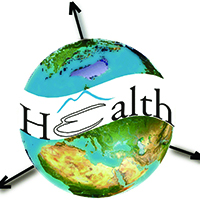Pathways to urban health and well-being: measuring and modelling of community services in a medium size city

Accepted: 27 February 2020
Appendix: 120
HTML: 8
All claims expressed in this article are solely those of the authors and do not necessarily represent those of their affiliated organizations, or those of the publisher, the editors and the reviewers. Any product that may be evaluated in this article or claim that may be made by its manufacturer is not guaranteed or endorsed by the publisher.
Authors
Social and natural capital are fundamental to people's wellbeing, often within the context of local community. Developing communities and linking people together provide benefits in terms of mental well-being, physical activity and other associated health outcomes. The research presented here was carried out in Christchurch - ÅŒtautahi, New Zealand, a city currently re-building, after a series of devastating earthquakes in 2010 and 2011. Poor mental health has been shown to be a significant post-earthquake problem, and social connection has been postulated as part of a solution. By curating a disparate set of community services, activities and facilities, organised into a Geographic Information Systems (GIS) database, we created i) an accessibility analysis of 11 health and well-being services, ii) a mobility scenario analysis focusing on 4 general well-being services and iii) a location-allocation model focusing on 3 primary health care and welfare location optimisation. Our results demonstrate that overall, the majority of neighbourhoods in Christchurch benefit from a high level of accessibility to almost all the services; but with an urban-rural gradient (the further away from the centre, the less services are available, as is expected). The noticeable exception to this trend, is that the more deprived eastern suburbs have poorer accessibility, suggesting social inequity in accessibility. The findings presented here show the potential of optimisation modelling and database curation for urban and community facility planning purposes.
How to Cite
PAGEPress has chosen to apply the Creative Commons Attribution NonCommercial 4.0 International License (CC BY-NC 4.0) to all manuscripts to be published.

 https://doi.org/10.4081/gh.2020.808
https://doi.org/10.4081/gh.2020.808




